Editor’s note: USF Museum Studies is proud that two of its students have received coveted Native American fellowship awards from the Peabody Essex Museum in Salem, MA. The first was Jordan Dresser (MA, 2015). In this post, Dedric Lupe (MA, 2016) shares his experiences from summer 2016.
by Dedric Lupe (MA, 2016)
When I was looking for an internship, I focused solely on collections management positions because that’s what I thought I wanted to do. I got a call back from an institution offering me a fellowship, but in a different department. I had very little knowledge of this department, but I took the leap, and it was a great learning experience. At the Peabody Essex Museum (PEM) I worked with the Exhibit Design and Planning department as part of the PEM’s Native American Fellowship program. The program presents a comprehensive perspective on the theory and practice of museum leadership, in the context of a meaningful, in-depth project within a department of the museum. I joined this program with five other fellows who are from different parts of the country.
The Exhibition Planning Department is responsible for the tracking, scheduling and management of all special exhibitions, gallery rotations, re-installations of permanent galleries, traveling exhibitions, and other special projects related to object installations. Exhibition Planning creates project schedules and budgets, negotiates exhibition related and artist contracts, manages tour planning and coordination, and serves as a central hub of all information related to exhibition projects and object related activity. Exhibition Planning also assumes a leadership role in the formation of processes related to exhibition activity and the management of all exhibition project teams: ensuring cross-departmental communication, applying problem solving where necessary and monitoring progress over time. For those reasons, a majority of my time was spent in planning meetings taking note of how far along a project is, if there were meeting benchmarks, and sticking to the timeline. These meetings gave me an insight of not only how project management plays an important role in the progression of an exhibit, but I also received a visual of the PEM Exhibition Development process in action. It is interesting to see the specific methods PEM staff have devised to maintain order in a highly complicated process. I had two department supervisors/mentors, Annie Lundsten and Dave Seibert. Annie is a Project Coordinator overseeing multiple shows throughout the year, and Dave is Lead Designer for many shows as well. Although I had two mentors, I really worked with the entire design team and almost every other department as a member of the Exhibition Design Team.
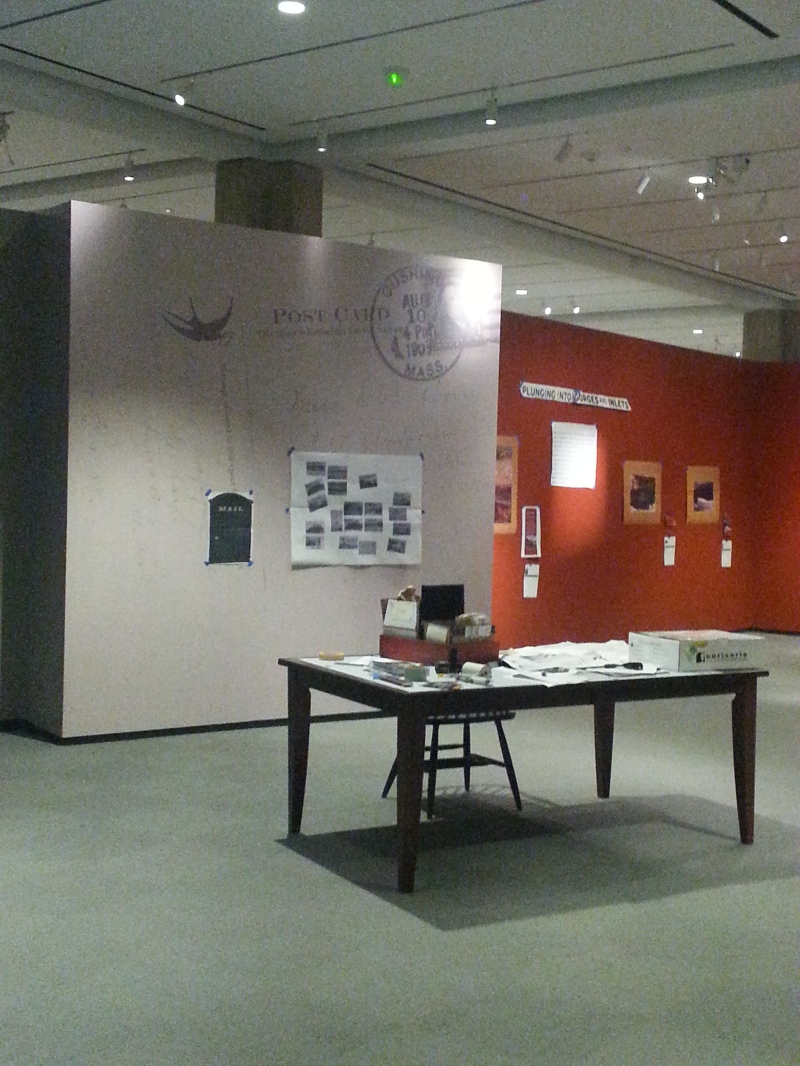
Mocking up the gallery. Photo credit: Dedric Lupe
I was privileged to get the opportunity to work alongside these other departments. I had regular meetings with the different departments involving Graphic Design, Exhibit Design, Integrated Media, Collections, Facilities, Conservation, Registration, and Curation. I worked closely with Annie on a handful of exhibitions, one of which, American Impressionist: Childe Hassam and the Isles of Shoals, opened in mid-July. Because I came in toward the end of the planning, I was able to sit in on meetings with the curators and designers during their final installation stages, and actually help hang some mock-ups. PEM uses these mock-ups, which are digital prints of the works, frame and all, to experiment with installation formats. It was interesting seeing how a show takes its final form and is installed so quickly.
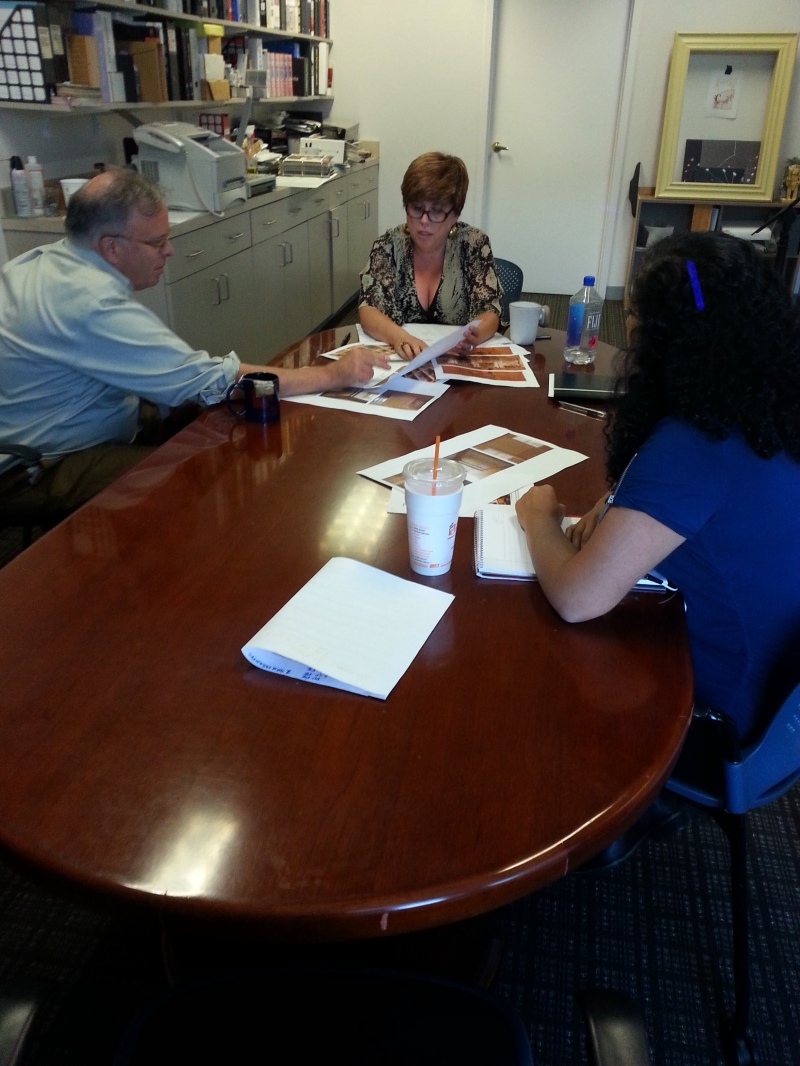
Dave Seibert, Karen Moreau Ceballo, and Jackie Traynor discussing Shoes graphics.
The other two shows that I worked on were Ocean Liners: Glamour, Speed, and Style, which is an exhibit celebrating the era of the first luxury cruises, and Shoes: Pleasure and Pain, an exhibit exploring the creativity of footwear from around the globe. During one meeting for Ocean Liners, we discussed the language of the exhibit and what we wanted the visitor to draw from it. I found that interesting as it made me think how word selection influences people’s behavior without directly guiding the thought process. For Shoes, I worked with the design team to get an understanding of how case design will influence gallery flow, experience, material conservation, and object safety. In one design meeting for Shoes Dave Seibert presented the final gallery floor plan schematics. Taking results from our earlier design conversations Dave explained case designs, placement, and how they activate spaces and the themes of the exhibit.
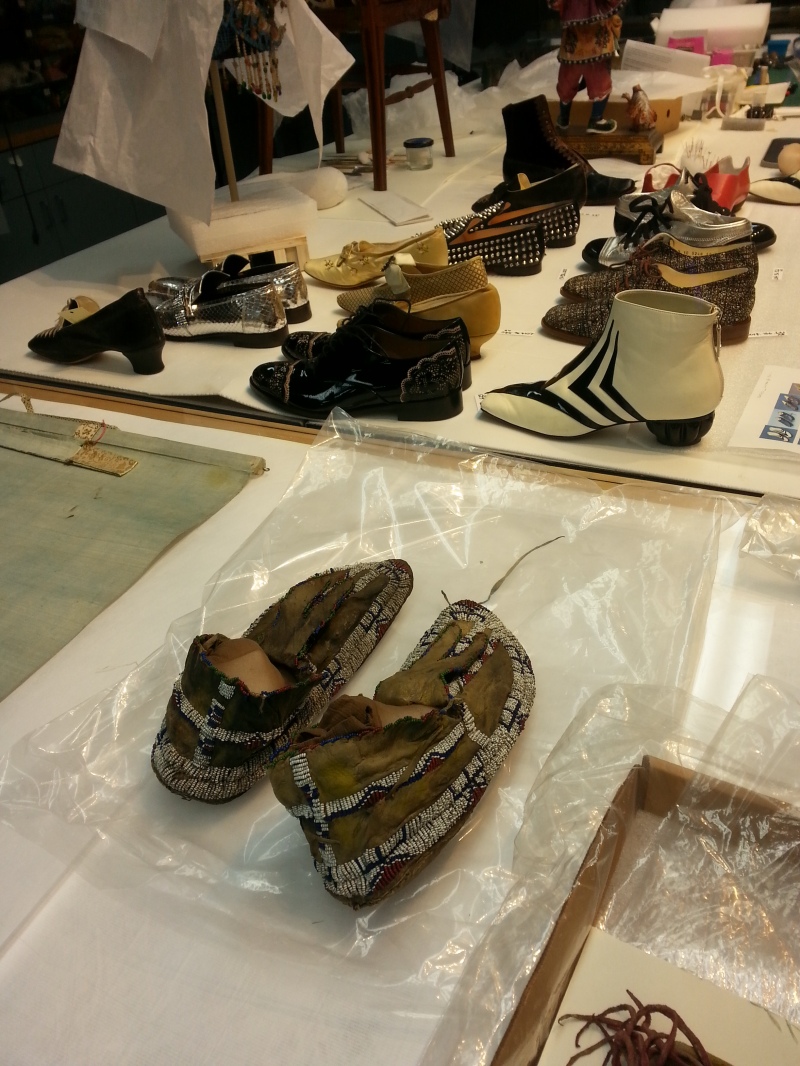
Shoes awaiting their mounts. Photo credit: Dedric Lupe
My work with Shoes also let me work with Mimi Leveque, the only 3D Object Conservator at PEM. I helped Mimi make shoe forms to support the shoes while on display. Because the shoes are coming from a private collection, they are only stuffed with tissue paper and material that does not meet conservation specifications. We built forms out of ethafoam, batting, nylon and other inert material and then sewed them closed. While on display, the forms should look invisible to the eye and not draw attention away from the shoe, which requires our builds to be precise and minimal. I completed four sets of forms. The most challenging was a pair of Chanel boots that require a three part form.
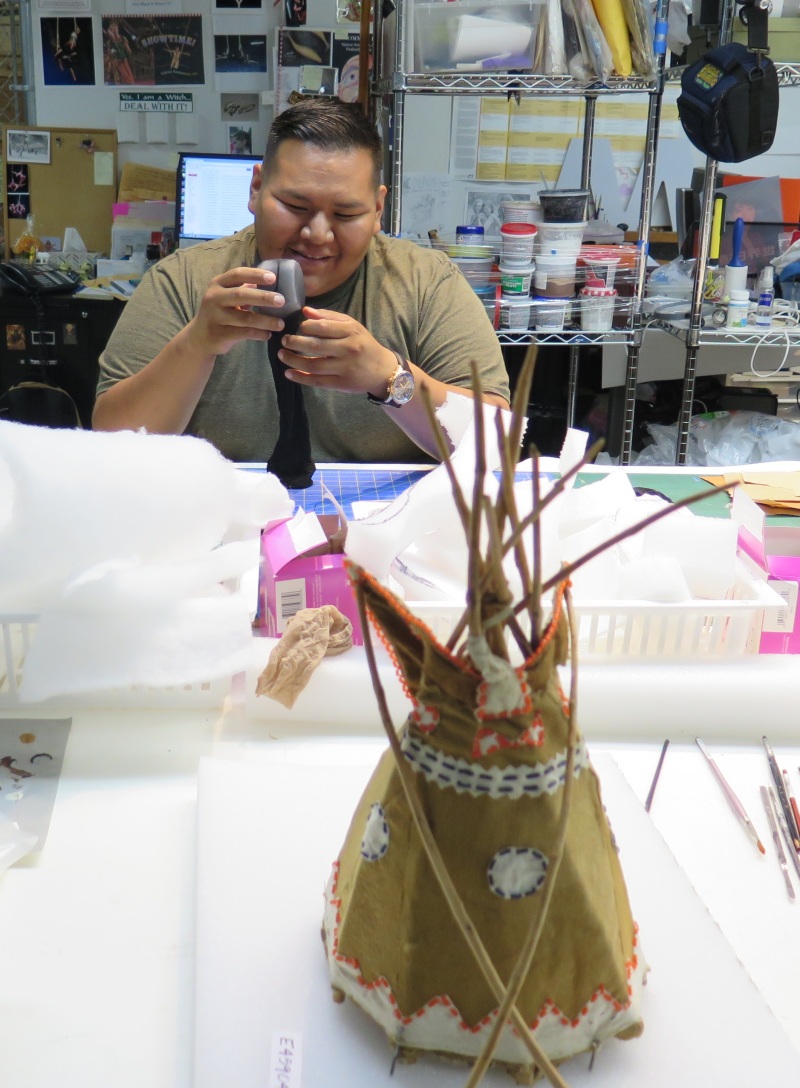
Working in Conservation. Photo credit: Dedric Lupe
Working with the Collections and Registration I documented labels for gallery exhibits that are being deinstalled with fellow Native Fellow Meranda Roberts. We ensured that the labels coincide with the PEM’s MuseumPlus collections database. We then checked the physical label to those in the database so that PEM has an accurate record for future use. It is tedious work but rewarding as I have found the history behind the objects intriguing. One such object is that of “King Penguin” who was the first penguin to be taxidermied and displayed in East India Marine Hall.
As you can see, I had my hands in a lot of departments. I feel that this has given me an insight that not a lot of fellows get. I was able to be a part of a lot of different conversations that really make the exhibits at PEM quite unique and engaging. This fellowship opened my eyes to a whole side of the museum world that I did not initially feel invested in. I took away invaluable knowledge about the planning and design of exhibits in an experience driven institution.
To learn more about the University of San Francisco’s graduate museum studies program click here.
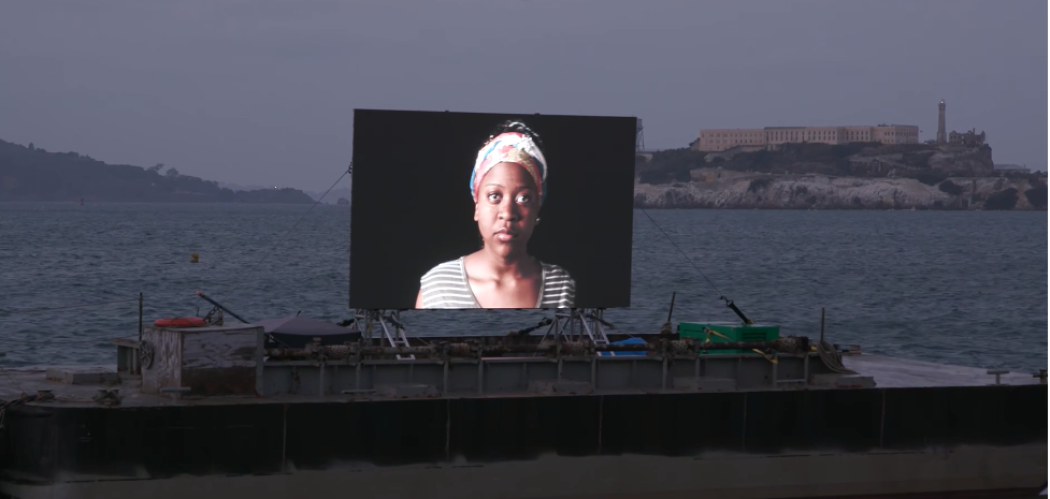
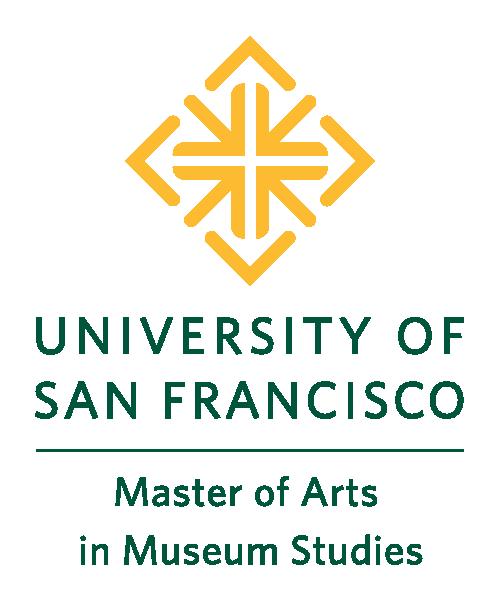
Pingback: Intern-connectivity: Using Digital Technology to Activate the Phoenix Art Museum | USF's Museum Blog